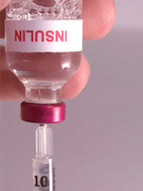 A person with type 2 diabetes may spend an average of nearly $85,500 to treat the disease and its complications over his or her lifetime, reports a new study in the American Journal of Preventive Medicine. The earlier diabetes is diagnosed, the greater the lifetime costs, with costs for women slightly higher than for men. Anything that can prevent or delay the onset of type 2 diabetes could lead to a sizeable reduction in healthcare costs in the future, say the researchers.
A person with type 2 diabetes may spend an average of nearly $85,500 to treat the disease and its complications over his or her lifetime, reports a new study in the American Journal of Preventive Medicine. The earlier diabetes is diagnosed, the greater the lifetime costs, with costs for women slightly higher than for men. Anything that can prevent or delay the onset of type 2 diabetes could lead to a sizeable reduction in healthcare costs in the future, say the researchers.
The goals of the study were to understand the financial return on preventing or delaying onset of type 2 diabetes and to get a sense of the long-term financial impact of new cases of diabetes and its complications, said Xiaohui Zhuo, Ph.D., of the Centers for Disease Control and Prevention in Atlanta and lead author. “This has become increasingly important given the rapid increase of the number of the incident cases in the U.S. and worldwide,” he said.
“This is a different approach to a calculation of the costs of diabetes,” said Robert E. Ratner, M.D., chief scientific and medical officer at the American Diabetes Association. “A better way of doing it is to note that in 2012, in the U.S., we actually had $176 billion in direct medical costs treating people with diabetes,” he said. “This is up 40 percent in five years.”
Ratner noted that complications due to diabetes have been decreasing in incidence and severity because of better control of blood sugar levels. “There has been a 50 percent reduction in the need for amputations and a 35 percent drop in kidney disease requiring dialysis or transplantation in the last 12 years,” he said. But these gains–and their associated cost reductions–are swamped by the rising number of new cases of type 2 diabetes. “When you look at the annual costs, you can clearly see this is an untenable rate of growth.”
Source: Zhuo X, Zhang P, Hoerger TJ. Lifetime direct medical costs of treating type 2 diabetes and diabetic complications. American Journal of Preventive Medicine, 2013















[…] are estimated to spend an additional $7,999 on medical costs annually due to their disease. A new study just published in the American Journal of Preventive Medicine (AJPM) revealed that over a […]